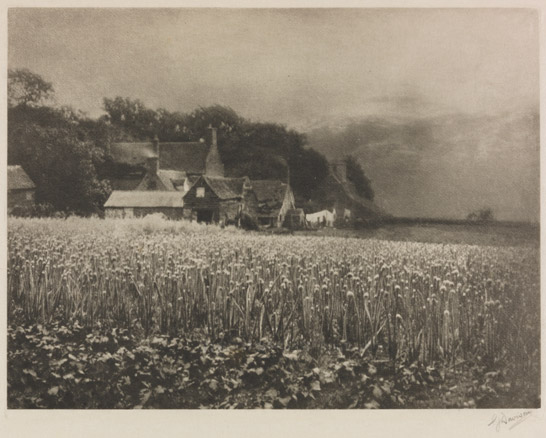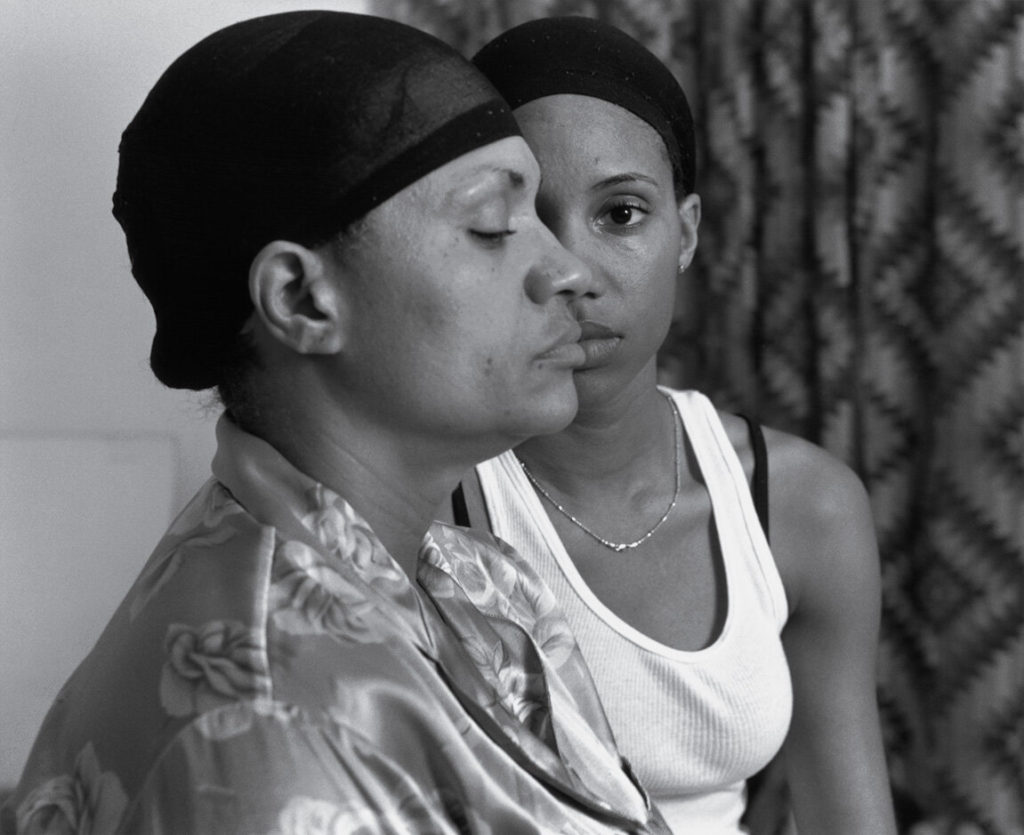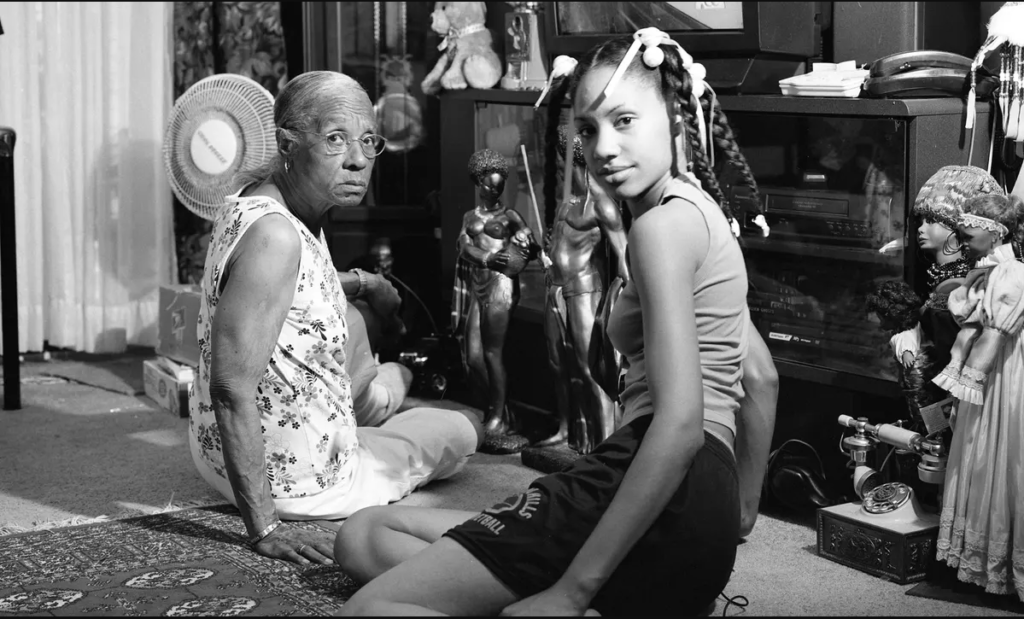How have Vasantha Yogananthan and LaToya Ruby Frazier explored identity and heritage in their work?
“The photographer is always trying to colonise new experiences or find new ways to look at familiar subjects—to fight against boredom. For boredom is just the reverse side of fascination: both depend on being outside rather than inside a situation, and one leads to the other.” -Susan Sontag, On Photography
In this essay I intend to investigate the differences and similarities of how photographers Vasantha Yogananthan and LaToya Ruby Frazier each explore the concepts of identity and heritage in their work. I have chosen these two because I feel that I can relate to aspects of their work, due to being a person of colour myself, and find that they have both approached the subject with their own unique style and technique. Yogananthan often making images of strangers, blurring the lines between fiction and reality, as well as implementing the technique of hand painting film images, something particularly important to photography’s history in India. His work stands between an outsider and an insider’s perspective, while being a stranger and photographing a world, he is not entirely familiar with while also reconnecting with his own culture and restabilising the portrayal of South Asia through photography. Frazier focusing on documenting her family, very much from the idea of an insider looking at world that she herself as black woman inhabit growing up in a steel mill town, taking her images using a monochrome film camera, giving them a timeless feel. In my own work I intend to explore my position in South Asian culture from my unique perspective as both an insider and an outsider due to being half white and living far from South Africa, where most my mother’s side of the family live, as well as India itself where they are originally from. For this project I am using older images of my family and images I had taken in South Africa, alongside newer images of Jersey and a few items related to my heritage. I feel like using archive images like this helps to show both my connection to that side of my family as well as how do not feel like I am truly a part of it due to not being a part of any of these images myself, and not being there to take others due to distance in both time and location. To further connect these images to my artist references, I will be taking inspiration from their editing styles for my own pictures to create visual connections between their images and my own.
Yogananthan and Frazier use two incredibly contrasting styles to explore the subjects of heritage and identity in their work, Yogananthan relying on traditional techniques and creating images evocative of the Pictorialist photo movement of the late 19th, early 20th century, made up of key figures like Alfred Stieglitz, Heinrich Kuhn and Frank Eugene, employing the help of painter Jaykumar Shankar to help hand colour his black and white images to give them a soft and dream-like appearance, through his use of colour and composition. His work is a way for him to reclaim his Sri Lankan heritage after being born and raised in France, by choosing to approach The Ramayana through a Pictorialist lens, a style crucial to European photography’s history, Yogananthan creates a series that draws inspiration from both sides of his heritage, while also depicting the mythology in a more fantastical way. Pictorialism is defined as ‘an approach to photography that emphasizes beauty of subject matter, tonality, and composition rather than the documentation of reality.’ (Encyclopedia 2019)


In contrast, Frazier takes inspiration from a variety of artists who were part of a movement known as social realism, using straight photography, defined as ‘a photo shoot that represents a scene or subject in sharp focus and detail, in accordance with the qualities that distinguish photography from other visual media, particularly painting. Simple and clean with sharp detail.’, (Anon 2021) to explore ideas of societal injustice. Some of these photographers include Dorothea Lange, Walker Evans, and Kathe Kowalski- Frazier’s mentor until her death in 2006. Frazier’s exploration of societal injustice came from her experiencing environmental racism first hand, and how it affects not just her but the wider community of Braddock.


Both artist’s work ties closely to the photographic theory of insider versus outsider documentative photography, explained by Abigail Solomon Godeau as ‘The insider position—in this particular context, the “good” position—is thus understood to imply a position of engagement, participation, and privileged knowledge, whereas the second, the outsider’s position, is taken to produce an alienated and voyeuristic relationship that heightens the distances between subject and object’. (Solomon Godeau 1994:49). Yogananthan being placed in the position as simultaneously an insider and outsider due to his own disconnection from South Asia and using this project to reconnect that side of himself, slowly becoming more of an insider as the project evolves. Frazier on the other hand, begins and ends her project as an insider, documenting her own family and their personal struggles in the town that she, her mother, and her grandmother all lived in, using this important position of knowledge to bring attention to the lives of the overlooked, while remaining empathetic, which carries over to Frazier’s later projects where she is placed in the position of the outsider, focusing on the personal and everyday experiences of those suffering.
Yogananthan explores his heritage and identity as a biracial man through his project The Myth of Two souls, an exploration of The Ramayana through photography, allowing him to reconnect with his heritage as well as investigating his connection to South Asia. This project works in contrast to photography being used as a cold colonial force used to oppress the people living in places like South America, Africa, and Asia, documenting them and comparing their physicality to that of their white oppressors. The Myth of Two Souls, explores Indian people and culture through a more empathetic lens, utilising The Ramayana, and its many interpretations, to explore the everyday lives of the people of India, while still maintaining the spiritual importance of the story, instead of depicting South Asians as sub-human creatures to be ruled by an empire, which he explains in an interview, ‘Now, I am not trying to say anything about the “truth” of Indian society: how things work, castes, or family relations. Rather, I am raising questions and examining the ways that reality and fiction merge together in the country. I think this is the greatest thing about India and the element that sets it apart from every other place in the world. The faculty of everyday people to dream up stories in their daily life; their ability to see gods and epics in the world around them’ (Yogananthan in Lensculture). This perspective comes from Yogananthan’s unique position, viewing the country through the curious lens of the outsider and the respect and care of one from the inside. The image I have chosen to analyse is The Evening Before from Chapter 2 of Yogananthan’s Myth of Two Souls, titled The Promise. This chapter depicts the protagonists Rama, an incarnation of the god of preservation, Vishnu, and Sita, an incarnation of Lakshmi, the goddess of wealth, and their emerging romantic relationship. The title implies that the image represents Rama on the night before his wedding to Sita and shows a young man sitting on some steps surrounded by an environment of traditional architecture and the city fading away into the background. The background colours are soft and light, contrasting Rama’s darker, more modern clothing, as well as his skin. Throughout Hindu mythology, Rama is often depicted having blue skin, alongside the god he incarnated from, this blue skin was likely used to represent the cosmos, as well as the idea that Rama’s ambiguous skin tone could mean that anyone could imagine him as themselves. Yogananthan uses this idea to cast a variety of Rama’s across the images taken for this project and depict The Ramayana, as something seen across all Southern Asia, not in specific ethnic groups or parts of the geography, deeply embedded even in modern culture. While the title implies the image is set at night, the sky is painted to be a light pink fading into cream, helping enhance the more mystical style of images, while also showing off the abilities of the artists Yogananthan collaborated with in order to make the piece, like Jaykumar Shankar, one of the few people remaining who paints on monochrome images in this way. By collaborating with Indian artists and writers, Yogananthan can reposition the portrayal of India, not from the view of outside invaders, but from the people who live there, demonstrating the importance of tradition and culture, while also showing modern day India.



LaToya Ruby Frazier explores her heritage and identity as a black woman living in an industrial city through her project The Notion of Family, a photobook that depicts the relationships between her family as well as the town of Braddock and how integral the steel industry is to the community’s lives. Frazier documents her struggles with chronic illness due to her proximity to the steel mills, the closure of the local hospital which was seen as the heart of the town due to the lack of town development, the death of her grandmother, and the abandonment of the black community in Braddock due to closures at the steel mill, leaving many residents sick and impoverished. Frazier uses photography to explore these societal injustices, and throughout the book places small amounts of text to contextualise images and explain the dynamic of her family. The images are taken on a monochrome film camera, reminiscent to the black-and-white pictures taken of black people during the civil rights movement. Frazier uses these similarities to emphasise her fight against environmental racism and how the US government still does not see black communities as worth protecting, seen through the lack of support given to residents financially as well as the eventual closure of their hospital, eventually leading to the death of Frazier’s grandmother due to healthcare workers not getting to her in time as they had to come from another town. The image I have chosen to analyse is titled “Me and my guardian angel”, which was taken by Frazier in 2005. It shows her and her grandmother sitting on the floor, surrounded by dolls, Frazier’s hair tied up in a childlike style, and smiling while her grandmother looks at it sternly. Frazier was raised by her grandmother and often dressed her in this way as a child. In an interview, Frazier explains her grandmother’s fascination with dolls, ‘She must have had hundreds, all in different sizes, different outfits, different nationalities… She began collecting them when my aunt – her daughter – was murdered. It was something to do with filling that loss’ (Frazier in Siddons 2018). This idea of loss is crucial to Frazier and her grandmother’s relationship, since this is one of the few images of the two of them together before her grandmother’s death, their final image together taken at her funeral, displaying her open casket and surrounded by dolls. In this image Frazier could be showing the complex nature of their relationship, raised by a woman who lost one of her own daughters and fills that hole with legions of dolls. Frazier’s decision to wear her hair in this way could represent her belief that her grandmother still viewed her as a child, despite her being almost 30 years old when the image was taken. Frazier’s position as an “insider” is key to her images, creating personal and impactful pictures that just would not be captured by anyone else, especially a white male photographer who would not have the same level of experience and understanding of the impact that race and gender has on her relationships and image making technique as well as the personal connections required to create them in the first place. Frazier’s position as a black woman leads to her work being mainly focused on the struggles of women in her inner circle, without resorting to sexualisation or pity, depicting them as independent but still in need of assistance of the wider community. For generations, black women have been forced into specific roles and expectations by the world around them and this image, and by extension Frazier’s entire photobook, really show how integral these expectations are in her life.



In conclusion, both Frazier and Yogananthan use photography to explore their identity and heritage using photography but using a range of contrasting techniques. Both photographers shoot using black and white film cameras, creating images that are reminiscent of the photographic movements they have taken inspiration from, however Yogananthan has his images hand painted afterwards while Frazier leaves hers as they are. They both explore locations important to them, Frazier exploring her hometown of Braddock and its descent into disarray as it is consistently overlooked by the local government, as well as her experience living there as a black woman, while Yogananthan reconnects with his South Asian identity and heritage by using a cultural staple to document the Indian subcontinent from his own perspective, while also working alongside Indian writers and artists. For my own work I used a digital camera as I did not have access to a film one and edited my images both in colour, inspired by Yogananthan’s work, and monochrome, inspired by Frazier. While I do enjoy my final results, I would have liked to the opportunity to work using film to take closer inspiration from my photographers and would have also wanted to make more shoots of both me and my family, creating images with more planning and organisation beforehand.
Bibliography:
Sontag, S.(1977) On Photography. New York: Farrar, Straus and Giroux
Pictorialism | photography. (2019). In: Encyclopædia Britannica. [online] Available at: https://www.britannica.com/technology/Pictorialism.
Anon, (2021). What is Straight Photography? What is Considered Straight? [online] Available at: https://www.imaginated.com/blog/what-is-straight-photography/.
Solomon-Godeau, S.(1994) Public Information: Desire, Disaster, Document, Part 1. San Francisco: San Francisco Museum of Modern Art
LensCulture, V.Y. | (n.d.). A Myth of Two Souls: Understanding India Through the Ramayana – Photographs by Vasantha Yogananthan | Text by Alexander Strecker. [online] LensCulture. Available at: https://www.lensculture.com/articles/vasantha-yogananthan-a-myth-of-two-souls-understanding-india-through-the-ramayana [Accessed 7 Feb. 2023].
The Editors of Encyclopedia Britannica (2018). Sita | Hindu mythology. In: Encyclopædia Britannica. [online] Available at: https://www.britannica.com/topic/Sita.
Hindustan Times. (2019). The dying art of color painting black-and-white photos. [online] Available at: https://www.hindustantimes.com/art-and-culture/the-dying-art-of-color-painting-black-and-white-photos/story-oVNrREtEDHKOjUOP3CSadJ.html [Accessed 7 Feb. 2023].
History.com EDITORS (2009). Civil Rights Movement. [online] History.com. Available at: https://www.history.com/topics/black-history/civil-rights-movement.
Siddons, E. (2018). LaToya Ruby Frazier’s best photograph: me and my guardian angel. The Guardian. [online] 23 Aug. Available at: https://www.theguardian.com/artanddesign/2018/aug/23/latoya-ruby-frazier-best-photograph-grandma-ruby [Accessed 7 Feb. 2023].
